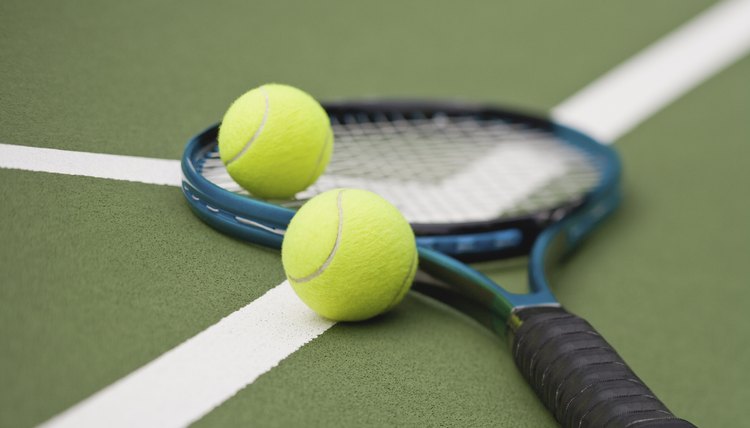Tennis Rules for Challenges

Amateur tennis players typically call their own shots, but professional matches traditionally have line umpires who make the call whether a ball is "out" or "good." The chair umpire has the power to overrule the line umpire's call. This system led to some fireworks, with many players arguing with umpires if they disagreed with the call. In 2008, rules for player challenges using Hawk-Eye technology became uniform throughout professional tennis. The French Open doesn't use this challenge system, since the ball makes a mark on the court's clay surface.
Use of Hawk-Eye Technology
Hawk-Eye technology uses a system of cameras to track the lines of a tennis court and the movement of the ball on that court through space and time. Computers then convert that information into a virtual image that displays the ball's trajectory with a shadow to mark exactly where the ball hit on the court. Use of this technology hasn't put line umpires out of a job, though. Line umpires make the initial call, and the chair umpire consults Hawk-Eye if a player makes a challenge to the line umpire's decision.
Number of Challenges Available
Technically, a player can challenge a line umpire's call as many times as he wants -- as long as he's right. However, he's only allowed to be wrong three times per set, or four if the set requires a tie-breaker game. For matches with advantage sets, each player is allowed three unsuccessful challenges when the score is tied at six games. If play continues through 12 more games, the players are allowed another three unsuccessful challenges. In matches that use a tie-breaker set, that set is treated like any other new set, with each player allowed three unsuccessful challenges. These allowances for unsuccessful challenges expire at the end of each set and cannot be carried over into the next.
When Players Can Use Challenges
A player can only make a challenge if play has stopped -- meaning either the shot as called ended the point, or the player stopped playing the point. He's allowed to return the ball once, but has to stop playing after that if he wants to challenge the line umpire's ruling. If the player waits too long to challenge the line umpire's call, the chair umpire may deny his request for electronic review.
Results of the Challenge
If the chair umpire accepts a player's request for electronic review, whatever the cameras reveal becomes his final decision and cannot be appealed further. If the line umpire originally judged the shot to be good, but electronic review shows the ball actually was out, the point ends in the receiving player's favor. However, if the line umpire judged a shot to be out when electronic review reveals it was in fact good, the point will be replayed. The chair umpire does have the power, however, to score the point in favor of the player who hit the ball, if in his judgment the shot was impossible for the other player to return.
References
Writer Bio
Jennifer Mueller began writing and editing professionally in 1995, when she became sports editor of her university's newspaper while also writing a bi-monthly general interest column for an independent tourist publication. Mueller holds a Bachelor of Arts in political science from the University of North Carolina at Asheville and a Juris Doctor from Indiana University Maurer School of Law.
